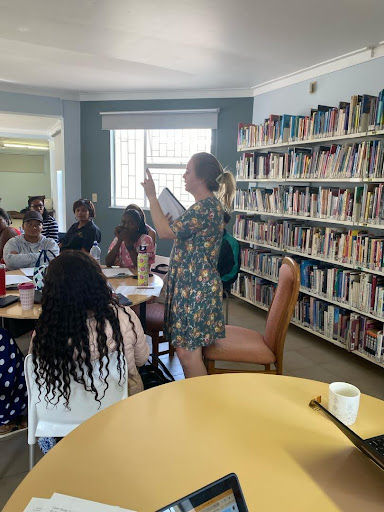Feedback and Feedforward
- Windhoek International School
- Jan 26, 2024
- 2 min read
Dear WIS Community,
This week, teachers in the Primary at WIS have been carefully revising the home learning policy, the role of Seesaw and the way we give feedback to children. As a parent, you can give feedback too!
The value of SeeSaw and Feedback
When using Seesaw, students will submit various activities and work projects. Seesaw allows teachers to give timely, personal feedback through the use of written and/or verbal comments. Allowing students to comment on each other's posts gives students an authentic audience for their work and valuable feedback from their peers. Actionable feedback provides students with a plan of action so they can meet their goals, and is one of the most powerful influences on student achievement.
Another factor that influences student success is the extent to which families are involved in their child’s learning and support it at home. When families view work and give specific feedback that highlights effort, students are encouraged to reflect, and are motivated to persevere and keep learning.
Notice | Question | Reflect |
I noticed that you… I observed that you… I realised that you… I saw that you… I recognized that you... | How might you…? What are some of the things you…? How could you…? How did you decide to…? What do you think…? What might be your thoughts about…? | After reading/watching/viewing your ______, I realised that… Now that I have seen your ______, I understand that… Your learning has caused me to… I used to think that… But, now I think… Your ______ has made me think of... You have inspired me to… One question I still have is ... |

Moving from feedback to feedforward
A good way of looking at how feedback can be more effective is to see it more as feed-forward than as feedback. The table below and this article give a good overview of the difference. Instead of focusing on what’s already been done, we can focus on how a student can improve, grow or learn.

When learners see their parents and teachers use the same language for feeding forward on their learning, they understand they are supported by a team of adults. This has a powerful effect on learning.
At WIS, we know it is important to teach students HOW to give effective feedback. Some teachers like to use the acronym TAG as an easy way to model effective feedback. The T stands for- Tell me something you liked, the A stands for- ask a question, and the G stands for- Give a suggestion. We encourage parents to use the same ways of giving feedback on their child’s learning. Here is a useful framework to help you, using the TAG acronym. Another useful tool that teachers use is The Ladder of Feedback.
Finally, an easy way to provide feedback in Seesaw is by using the video tool to leave a video or screen recording of feedback for your child. Including a short video for feedback is a powerful way to get their attention and support growth.
Your child’s homeroom teacher will also be asking you to feed-forward on your child’s learning on SeeSaw and during learning celebrations. I hope this article has given you some tools to join us in the pursuit of providing our students with feedback that helps them grow. I am leaving you with a powerful video on the value of feedback, Austin’s Butterfly. Enjoy!
Warm regards,
Marcelle van Leenen
Primary Principal








Comments